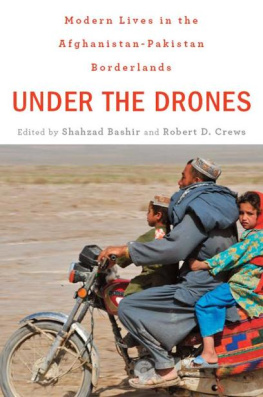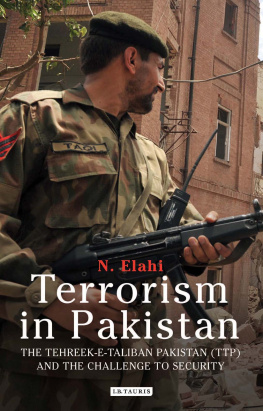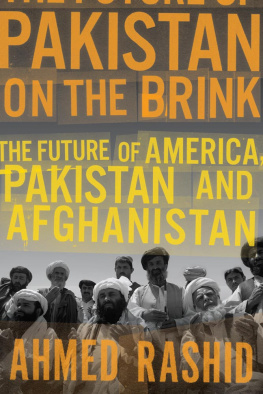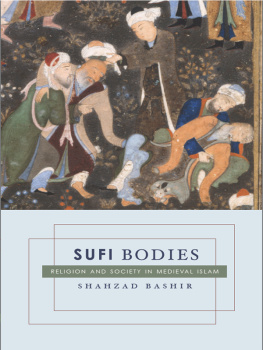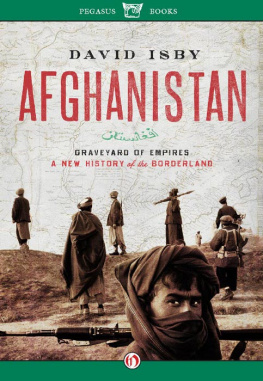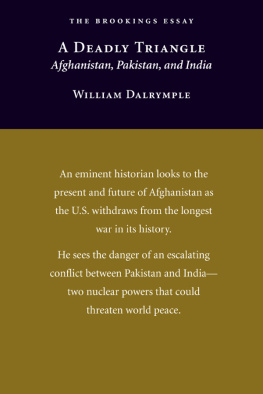Shahzad Bashir - Under the Drones: Modern Lives in the Afghanistan-Pakistan Borderlands
Here you can read online Shahzad Bashir - Under the Drones: Modern Lives in the Afghanistan-Pakistan Borderlands full text of the book (entire story) in english for free. Download pdf and epub, get meaning, cover and reviews about this ebook. year: 2012, publisher: Harvard University Press, genre: Politics. Description of the work, (preface) as well as reviews are available. Best literature library LitArk.com created for fans of good reading and offers a wide selection of genres:
Romance novel
Science fiction
Adventure
Detective
Science
History
Home and family
Prose
Art
Politics
Computer
Non-fiction
Religion
Business
Children
Humor
Choose a favorite category and find really read worthwhile books. Enjoy immersion in the world of imagination, feel the emotions of the characters or learn something new for yourself, make an fascinating discovery.
- Book:Under the Drones: Modern Lives in the Afghanistan-Pakistan Borderlands
- Author:
- Publisher:Harvard University Press
- Genre:
- Year:2012
- Rating:5 / 5
- Favourites:Add to favourites
- Your mark:
- 100
- 1
- 2
- 3
- 4
- 5
Under the Drones: Modern Lives in the Afghanistan-Pakistan Borderlands: summary, description and annotation
We offer to read an annotation, description, summary or preface (depends on what the author of the book "Under the Drones: Modern Lives in the Afghanistan-Pakistan Borderlands" wrote himself). If you haven't found the necessary information about the book — write in the comments, we will try to find it.
Shahzad Bashir: author's other books
Who wrote Under the Drones: Modern Lives in the Afghanistan-Pakistan Borderlands? Find out the surname, the name of the author of the book and a list of all author's works by series.
Under the Drones: Modern Lives in the Afghanistan-Pakistan Borderlands — read online for free the complete book (whole text) full work
Below is the text of the book, divided by pages. System saving the place of the last page read, allows you to conveniently read the book "Under the Drones: Modern Lives in the Afghanistan-Pakistan Borderlands" online for free, without having to search again every time where you left off. Put a bookmark, and you can go to the page where you finished reading at any time.
Font size:
Interval:
Bookmark:
Under the Drones
UNDER THE DRONES
Modern Lives in the Afghanistan-Pakistan Borderlands
EDITED BY
Shahzad Bashir
Robert D. Crews
HARVARD UNIVERSITY PRESS
Cambridge, Massachusetts / London, England / 2012
Copyright 2012 by the President and Fellows of Harvard College
All rights reserved
Jacket image: Bay Ismoyo/AFP/Getty Images
Jacket design: Jill Breitbarth
This book was made possible in part by a grant from Carnegie Corporation of New York. The statements made and views expressed are solely the responsibility of the authors.
Library of Congress Cataloging-in-Publication Data
Under the drones : modern lives in the Afghanistan-Pakistan borderlands / edited by Shahzad Bashir, Robert D. Crews.
pages: maps; cm
Includes bibliographical references and index.
ISBN 978-0-674-06561-1 (alkaline paper)
1. AfghanistanRelationsPakistan. 2. PakistanRelationsAfghanistan. 3. AfghanistanBoundariesPakistan. 4. PakistanBoundariesAfghanistan. 5. BorderlandsAfghanistan. 6. BorderlandsPakistan. 7. AfghanistanPolitics and government. 8. PakistanPolitics and government. 9. Islam and politicsAfghanistan. 10. Islam and politicsPakistan. I. Bashir, Shahzad, 1968 II. Crews, Robert D., 1970
DS357.6.P18U53 2012
958.104'71dc23 2011044605
Contents
Shahzad Bashir and Robert D. Crews
Amin Tarzi
Gilles Dorronsoro
Sana Haroon
James Caron
Shah Mahmoud Hanifi
Thomas Ruttig
Lutz Rzehak
Faisal Devji
Tahir Andrabi, Jishnu Das, and Asim Ijaz Khwaja
Farzana Shaikh
Jamal J. Elias
Nushin Arbabzadah
Fariba Nawa
Shahzad Bashir and Robert D. Crews

Afghanistan and Pakistan

The Af-Pak frontier
Shahzad Bashir and Robert D. Crews
Glancing at the front page of any major Western newspaper nowadays, one is likely to see a story about Afghanistan or Pakistan. Such stories tend to engage the same topics over and over: terrorism, militancy, suicide bombings, counterinsurgency operations, corruption, mistreatment of women, and occasional triumphs by heroic Afghans and Pakistanis in the face of nearly impossible odds. Journalistic descriptions primarily privilege the present, seen through the interests and perspectives of Western observers, as the ultimate vantage point for what occurs along the boundary between these two modern nation-states. The people who populate these stories seem to be stuck in a kind of time warp of unchanging tribal traditions, eternally isolated since time immemorial and only now coming face to face with realities the rest of the planet takes for granted as part of the modern world. The Taliban, the regions most potent sociopolitical force of recent times, is referred to as medieval without anyone batting an eye, even though the social formations that comprise the group have their origins in the 1980s. On the rare occasion when a historical perspective is invoked, it has only a few oft-repeated markers: Alexander the Great, the great game between the Russian and British empires in the late nineteenth and early twentieth centuries, and the Soviet invasion of 1979 and its consequent civil war. People who live there would seem to become historical subjects only when acted upon by outsiders, most recently by the Americans and their NATO allies. The most striking image of this engagement with the inhabitants of the region is that of the drone aircraft, piloted from Nevada or Florida, conducting high-altitude aerial surveillance of this rugged borderland and periodically unleashing lethal fire on suspected militants below in what many commentators have understood as a contest between the sophisticated technology of the modern, civilized West and the savagery of a backward foe. In the absence of such intervention, these populations are portrayed as living without any sense of change, eternally wallowing in a world of barbarity, which if left to itself would ultimately strike out against the security of the West.
This book challenges this portrayal of the Afghanistan-Pakistan borderlands and seeks to provide an alternative to thinking about the region that is narrowly framed by Washingtons shifting conceptions of security. Drawing away from descriptions predicated on global politics alone, we wish to illuminate aspects of the rich social and cultural worlds that are opaque to cameras mounted on drones flying many thousands of feet above this terrain. Beginning in 2008, policymakers in the United States began to use the neologism Af-Pak to denote the territory that the late former UN ambassador Richard Holbrooke characterized as a single theater of war. Frustrated by the expansion of the Taliban insurgency in Afghanistan and the persistence of safe havens for militants on Pakistani territory, Holbrooke, President Barack Obamas special representative to the region, called for an integrated approach to Afghanistan and Pakistan. In 2009 the Obama administration not only shift ed resources from Iraq to the region but, under General David Petraeus, expanded a counterinsurgency strategy that in turn hinged upon particular conceptions of society, politics, and culture in Afghanistan and Pakistan.
Now imagined as a continuous war zone, Af-Pak appeared to be inhabited by populations governed by primitive and archaic norms. Drawing on the authority of social scientists and various contractors and informants under the Pentagons Human Terrain System Project, this way of envisioning the region promised a scheme for making these populations legible. The experience of the Iraq war had alerted experts to the problem of sectarian politics, but it was their encounter with tribes that suggested a grid of identification that could be exported to this theater. The inhabitants of Af-Pak seemed to be wholly defined by the immutable categories of tribe and ethnicity. Paradoxically, military planners and their civilian advisors seized upon the idea of tribe as the essential key to Afghan and Pakistani identities at a time when the concept had long been abandoned by most anthropologists and scholars in related fields. From the late 1960s, researchers began to question the utility of a term that commonly assumed the timeless existence of closed social units with clear biological boundaries and fixed membership occupying a lower stage of human development. Instead they pointed to the malleability, flexibility, and even dynamic modernity of societies where people maintained meaningful genealogies that interacted in complex ways with other social and political identities.
As the geographic focus of American strategy shift ed to the 1,600-mile frontier across which Afghan insurgents retreated to mountain sanctuaries in Pakistan, the Pashtuns residing on both sides of the border came to dominate debates about counterinsurgency. Insurgents fighting the Kabul government and U.S. and NATO forces in Afghanistan were drawn from this group, and in 2007 a similar movement, the Tehrik-e Taliban, emerged among the Pashtuns in Swat in northwestern Pakistan, pressing for the implementation of Islamic law in a manner resembling that of the Afghan Taliban. At the same time, Western intelligence agencies concluded that the tribal region of northwestern Pakistan also served as a refuge for al-Qaida. Thus the Pashtun belt came to be defined by multiple insurgencies and fierce military campaigns waged from the air and on the ground. Meanwhile, the latest counterinsurgency doctrine called for the urgent mapping of Pashtun tribes and customs. The study of the Pashto language, which was offered in only one or two universities in the United States and a handful of military schools, was less a priority than the hiring of Pashtun translators, who could earn $200,000 a year or more by deploying to the field with NATO forces. Given this language deficit and the increasing inaccessibility of actual Pashtun populations, military intelligence and contractors looked to past research, most of which was conducted decades ago and before the dislocations of the Afghan revolution and Soviet war. This scholarship in turn drew heavily on the ideas and language of British colonial administrators who had themselves resorted to ethnography as a strategy to rule this space.
Next pageFont size:
Interval:
Bookmark:
Similar books «Under the Drones: Modern Lives in the Afghanistan-Pakistan Borderlands»
Look at similar books to Under the Drones: Modern Lives in the Afghanistan-Pakistan Borderlands. We have selected literature similar in name and meaning in the hope of providing readers with more options to find new, interesting, not yet read works.
Discussion, reviews of the book Under the Drones: Modern Lives in the Afghanistan-Pakistan Borderlands and just readers' own opinions. Leave your comments, write what you think about the work, its meaning or the main characters. Specify what exactly you liked and what you didn't like, and why you think so.

